|
Red-tailed Hawk Buteo jamaicensis Guaraguao, Busardo Colirrojo
|
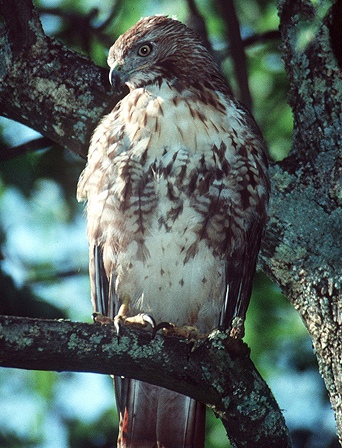 |
|
Photo: G Beaton
|
|
Red-tailed Hawk Buteo jamaicensis Guaraguao, Busardo Colirrojo
|
 |
|
Photo: G Beaton
|
|
IDENTIFICATION: A large, brown hawk with rounded wings. Although it does have a reddish tail, that color is not easily seen from below. The dark belly band on the light undersides is a more reliable field mark for adults. Some individuals are much darker below. Immature birds have streaked undersides and a barred tail. The Spanish conquerors adopted one of the Native American names for this species. Length: 56 cm.; weight: males 690-1,300 g.; females 900-1,460 g.; wingspan 127 cm. VOICE: The call is a descending "keeer", like steam escaping from a boiler. Audio (M. Oberle). HABITAT: Forested areas and forest edges, even over cities. HABITS: Often sits on a perch to watch for prey below, and then glides down to catch rodents, crabs, lizards, small birds, large insects (crickets, grasshoppers), and even large centipedes. It will also fly above the forest canopy or suburban landscapes looking for prey. Smaller birds sometimes chase the Red-tailed Hawk out of their territory. In fact, a popular expression in Puerto Rico is "cada guaraguao tiene su pitirre" which means, "every hawk has its kingbird" [pestering it]. Audio (Red-tailed Hawk being chased by a Gray Kingbird; M. Oberle). The Red-tail has a dramatic courtship flight, with the male and female calling, circling each other, and soaring high in the air. Its nest is a large jumble of sticks in the crown of a tree and contains 2-3 white eggs. Both sexes build the nest, incubate the eggs and feed the chicks. The incubation period is 28-35 days, and the chicks leave the nest 42-46 days after hatching. But the young birds stay close to their parents for several months after fledging. Captive Red-tailed Hawks have lived as long as 29 years, while one wild bird in North America was documented to be at least 21 years old. STATUS AND CONSERVATION: A common sight over forests and forest edges, even in urban areas. The Red-tailed Hawk was formerly hunted extensively, in part because it makes an easy target when gliding, and also because farmers were concerned about the occasional chicken it might capture. Hawk nestlings were reportedly taken for food in Puerto Rico a century ago. Under legal protection, the population may well be higher now than early in the 20th Century. RANGE: Breeds from central Alaska south through the Caribbean to Panamá. A regular site for this species is over the forests of El Yunque. TAXONOMY: FALCONIFORMES; ACCIPITRIDAE; Accipitrinae |
|
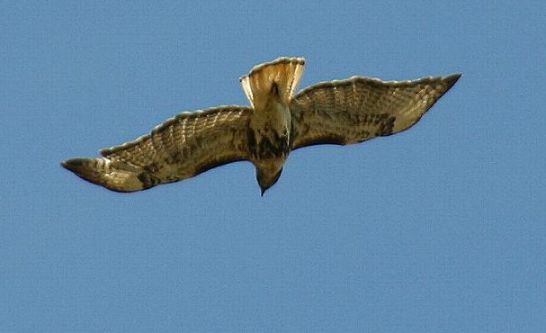 |
|
Photo: A. Sánchez Muñoz
|
 |
|
|
Photo: G. Beaton
|
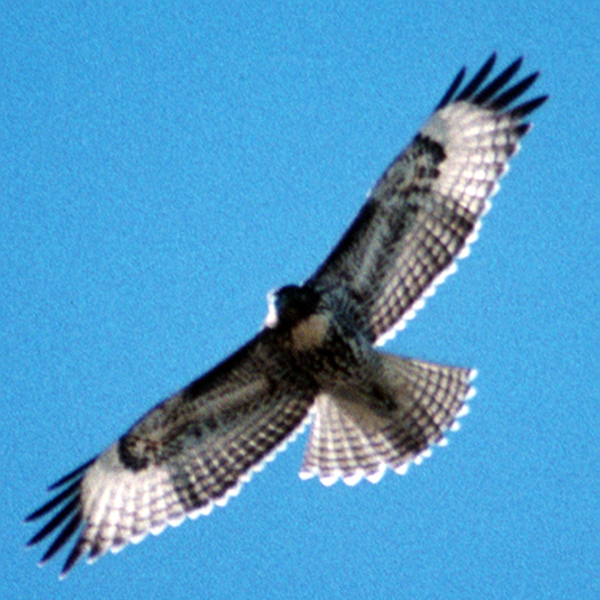 |
|
|
Photo: G. Beaton
|
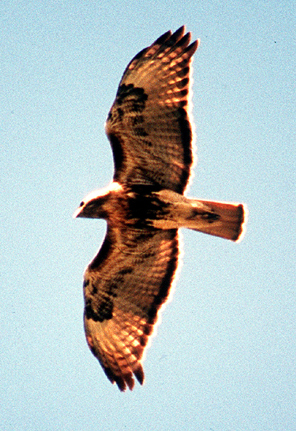 |
|
|
Photo: G. Beaton
|
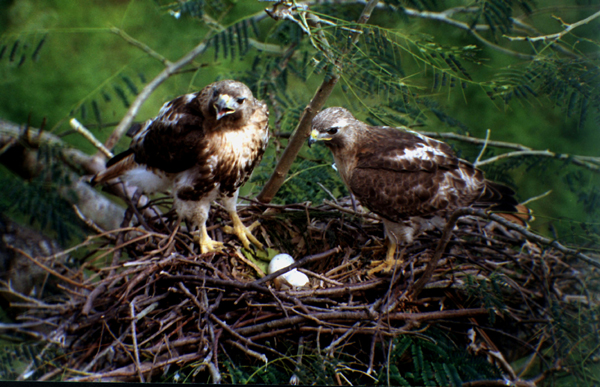 |
|
|
Photo: P. Blanco
|
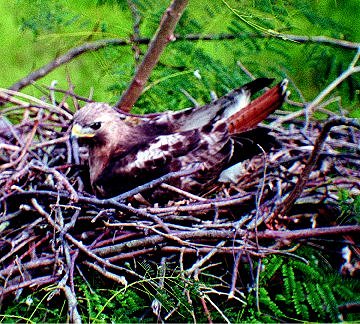 |
|
|
Photo: P. Blanco
|
 |
|
|
Photo: P. Blanco
|
|
References del Hoyo, J., A. Elliott, and J. Sargatal, eds. 1994. Handbook of Birds of the World, Vol. 2, New World vultures to guineafowl. Lynx Edicions, Barcelona. Ehrlich, P.R., D.S. Dobkin, and D. Wheye. 1988. The birder’s handbook: a field guide to the natural history of North American birds. Simon and Schuster/ Fireside, NY. Johnsgard, P.A. 1990. Hawks, eagles, and falcons of North America: Biology and natural history. Smithsonian Institution Press. Washington, DC. Pérez-Rivera, R. A., and R. Cotté-Santana. 1977. Algunas notas sobre los falconiformes residentes en Puerto Rico. Science-Ciencia 4:89-95. Preston, C. R. and R. D. Beane. 1993. Red-tailed Hawk (Buteo jamaicensis). No. 52 in The birds of North America (A. Poole and F. Gill, eds.). Acad. Nat. Sci., Philadelphia, PA, and Am. Ornithol. Union, Washington, D.C. Raffaele, H.A. 1989. A guide to the birds of Puerto Rico and the Virgin Islands. Princeton. Raffaele, H.A. 1989. Una guía a las aves de Puerto Rico y las Islas Vírgenes. Publishing Resources, Inc., Santurce, PR. Raffaele, H.A., J.W. Wiley, O.H. Garrido, A.R. Keith, and J.I. Raffaele. 1998. Guide to the birds of the West Indies. Princeton. Rivera-Milán, F.F. 1995. Distribution and abundance of raptors in Puerto Rico. Wilson Bull. 107(3):452-462. Saliva, J.E. 1994. Vieques y su fauna: Vieques wildlife manual. U.S. Fish & Wildlife Service, Boquerón, PR. Santana C. E., E.N. Laboy, J.A. Mosher, and S.A. Temple. 1986. Red-tailed Hawk nest sites in Puerto Rico. Wilson Bull. 98:561-570. Scholz, F. 1993. Birds of prey. Stackpole Books, Mechanicsburg, PA. Snyder, N.F.R., J.W. Wiley, and C.B. Kepler. 1987. The parrots of Luquillo: natural history and conservation of the Puerto Rican Parrot. Western Foundation of Vertebrate Zoology, Los Angeles. Wetmore, A. 1916. Birds of Porto Rico. U.S. Dept. of Agriculture Bull. No. 326. Raptors in general in Puerto Rico: http://netdial.caribe.net/~falconpr/ Next related species in taxonomic order Previous related species in taxonomic order |
|